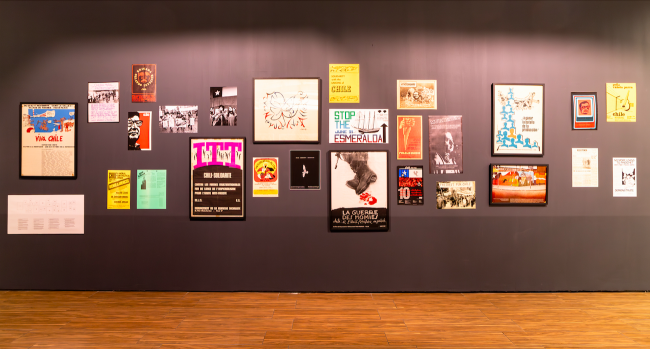
This is a short version of the curatorial text that appears in Spanish at the exhibition at the National Center of Contemporary Art in Chile, November 4, 2023 through March 24, 2024. A full list of artists featured in the exhibit is available here.
In her poem "Anniversary," published in 1954 in Lagar, Chilean poet and winner of the Nobel Prize in Literature, Gabriela Mistral, evokes a project of resistance that acknowledges the role of memory in the construction of presents and futures. “We are still time,” she writes, remembering the intrinsic link between pain and love. Relying on radical decolonial love to recognize the open wounds of history and thus war, "Anniversary" reveals a collective, urgent, and contingent practice of liberation, one that imagines a more just world and that is only possible in collectivity.
The title of this exhibition, Todavía somos el tiempo: arte y resistencia a 50 años del golpe (We are still time: Art and resistance 50 years after the coup), honors Mistral’s resilient poetry, radical pedagogies, and emancipatory politics. In so doing, it also honors the project of many cultural workers in and beyond Chile who have fought in reciprocity against the world’s wrongs and thus against ongoing war. The title of this show honors, in other words, the decolonial time in the struggle for dignity.
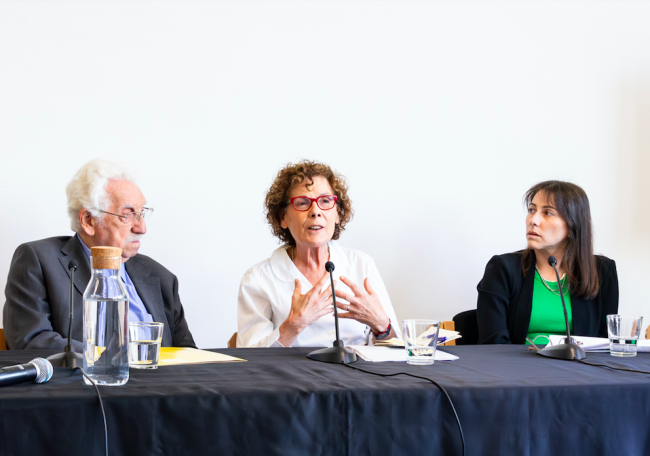
The historical context that brings us together for this exhibition is a rather different anniversary than that of Mistral’s poem: the commemoration of the 50th anniversary of the coup. Through more than one hundred works created by artists and collectives from different generations, in addition to hundreds of publications and archives from documentation centers in Chile and the United States, this exhibition invites the public to think about art in relation to the coup from a decolonial perspective, imagining other ways of living, being, doing, learning, feeling, loving, and listening. This exhibition thus recognizes the role of imperialism and global capitalism in the events and ideologies that designed the dictatorship and gave the green light to its continuity, presenting art and time as a community project of liberation, justice, and reparation.
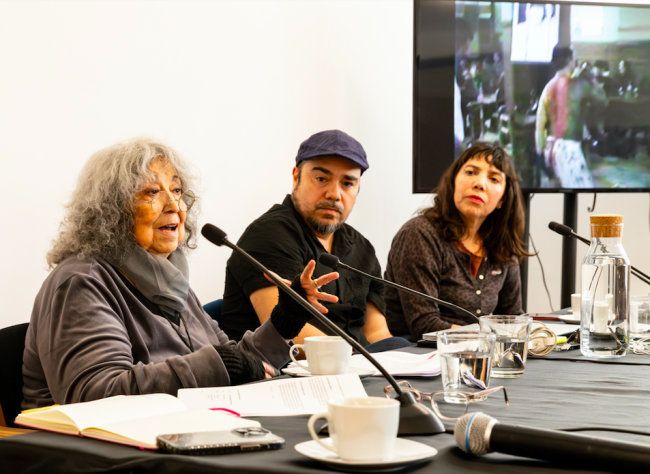
Commissioned by the Chilean Government’s Ministry of Culture, Arts and Heritage as part of a series of political, civic, and cultural events commemorating the 50th anniversary of the September 11, 1973 coup, the exhibition is divided into five sections: “Encounters: Archives in Action,” “Sonic Memorials,” “Transnational Solidarities,” “Urgent Architectures,” and “Ecologies of Reciprocity.”
Encounters: Archives in Action
The exhibition begins at the museum’s central hall with the section “Encounters: Archives in Action.” Situated in the commune of Cerrillos in southwest Santiago, this section invites the public to see and think about the historical and social memory of Cerrillos in relation to the broader concept of territoriality and its link with social struggles since the time of the Popular Unity, the left-wing political coalition that supported Salvador Allende’s presidency in the early 1970s.
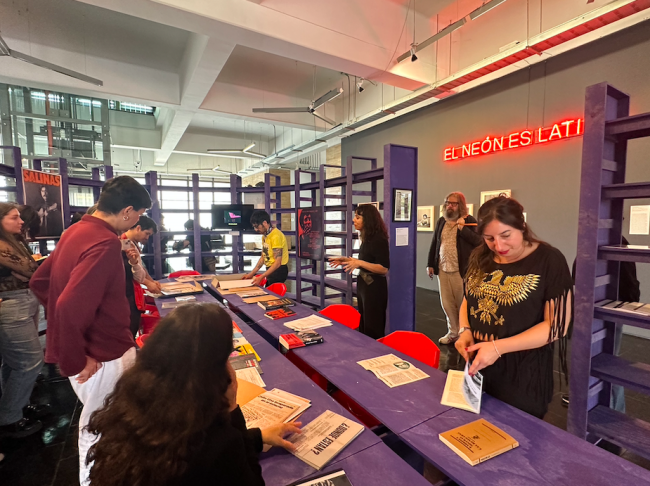
Contemplating the concept of territoriality as a cultural construction that relates the political and the habitable with the collective work toward dignity and reciprocity between human and non-human beings, this section includes artworks, archives, and publications such as novels, poems, and nonfiction. Together, these works reflect on the methodological approach of the show’s curatorial framework, in which what is at stake is the relationship between decolonial thinking, critical memory, social justice, and art as a form of relational behavior and communal representational practices.
Installed in a large oval-like structure whose shape and blue color recalls the National Stadium, these artworks, documents, and publications exist in a communal environment that promotes informal socialization, showing design as an activist tool to activate memory and the political, the poetic, and the ethical in a hierarchical world.
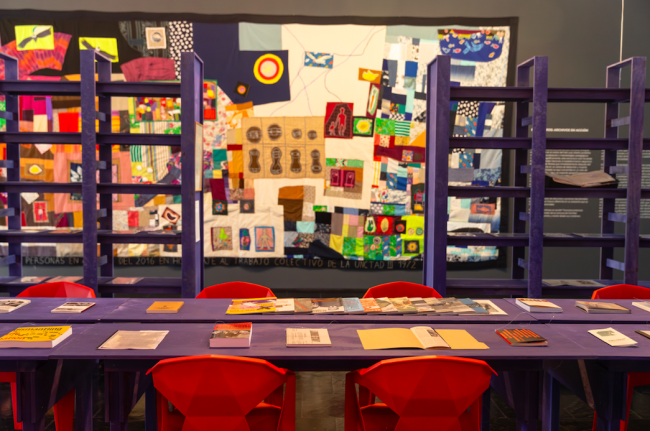
“Encounters: Archives in Action” is thus the beating heart of the exhibition, proposing art as a sensitive system of action, convocation, and discussion instead of a closed form of disaffected and timeless contemplation that buries the past in the past. Art in this context recognizes not only the diverse forms of resistance against the dictatorship and its ruins; it also invites the audience to imagine and remember otherwise ways of living and relating in collectivity.
Sonic Memorials
The second section, “Sonic Memorials,” makes visible the agency of voice and the act of listening in the construction of memory, interposing the sonic to the Western regime of vision as the only record of truth. In effect, the authority of vision has prevailed in art history, a field that has traditionally discriminated other areas of creation beyond the gaze as well as blindness.
At the same time, sonic agencies transgress the authority of the television that, during Pinochet’s dictatorship, not only censored information but also turned into a spectacle. This section thus reinforces different systems and means of resistance such as the radio, highlighting in turn the role of oral transmission, clandestine stories, protests, whispers, and reading.
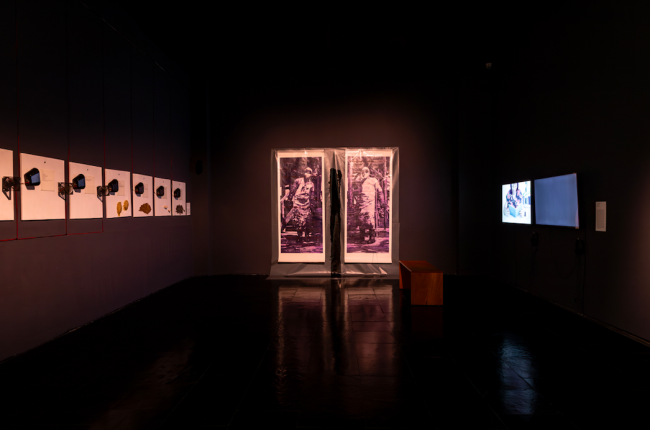

This section includes arpilleras, a brightly colored patchwork picture made predominantly by groups of women against the dictatorship; microphones emitting altered discourses by Allende; recordings of criminals reading novels to blind people and thus artworks raising the question of forgiveness, memory, and trauma; and installations and video works making visible different practices of language as forms of resistance such as that of Mapudungun, the language spoken by the Mapuche.
Transnational Solidarities
“Transnational Solidarities” shows different instances of transnational solidarity created by anti-imperialist cultural workers in defense of the victims of the dictatorship. Importantly, this section examines a central and yet totally unknown artistic network that developed in the United States in solidarity with the victims of the U.S.-backed military dictatorship in Chile (1973-1990), unearthing from the realm of the visual arts the catastrophic global economic consequences of such dictatorial regime. It also shows aesthetic forms developed from other nations in Europe, the Americas, and the world, including Japan, Palestine, Algiers, and more. Together, works in this section criticize the imperialist role of the United States in the Chilean and other Latin American dictatorships in the Cold War context, questioning the relationship between the dictatorship and the neoliberal model implemented first in Chile under Augusto Pinochet.

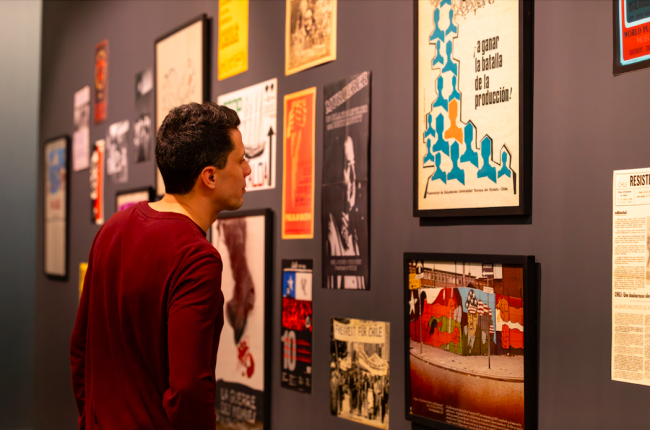
Centering on artistic networks of solidarity developed by socially committed cultural workers in the global context, “Transnational Solidarities” makes visible a genealogy completely absent from Chilean art history narratives. Gathering materials through loans and/or facsimile versions, collaborators in this section include institutions such as Smithsonian’s Archives of American Art; the North American Congress on Latin America; the Archives and Special Collections from the University of Connecticut; the California Ethnic and Multicultural Archives from the University of California, Santa Barbara; the Hanna Holborn Gray Special Collections Research Center at the University of Chicago; and the Museum of Memory and Human Rights in Santiago, among others. Works include documentary photographs on the transnational solidarity movement never shown before, as well as arpilleras, textiles, installations, and more.
Urgent Architectures
The coup not only inaugurated the process of privatization in the planning and control of the urban environment through the dictatorship’s neoconservative normalization of austerity, homogenizing housing as a mirror of the censored collective body. It also banned and repressed graphic and bodily expression in public spaces, covering murals and graffiti and persecuting their creators. “Urgent Architectures,” reflects on the capacity of architecture to create and imagine spaces and social materials at the service of justice in housing and public spaces, dismantling the authority of the monumental and the permanent through the tropes of the urgent and the collective. In this sense, the section offers an opportunity to think about architecture and design as social and contingent tools, as opposed to formal and timeless aesthetic monuments.

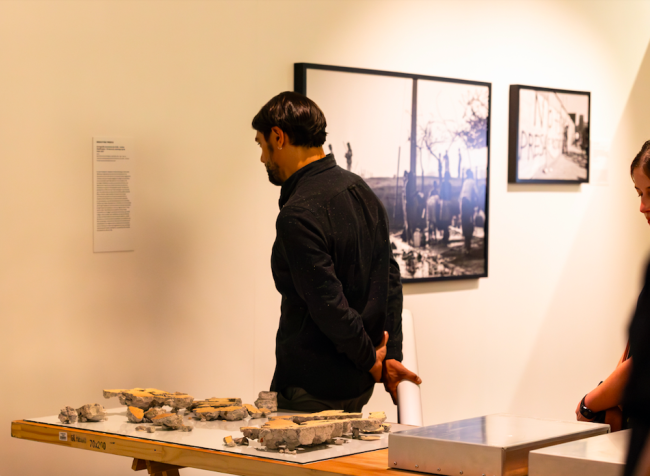
“Urgent Architectures” thus includes works documenting practices of brigadismo past and present, drawings made by architects while in concentration camps in Chile, contemporary artworks critiquing modernity’s progress and development, and material on the relevance of the Popular Unity’s program of beaches as spaces for public joy in a narrative that resists homogenization.
Ecologies of Reciprocity
Lastly, “Ecologies of Reciprocity” emphasizes the horizontal role of cooperation between living beings in the era of the Capitalocene, the current geological stage in the earth. Accented in Chile with the dictatorship and its colonial 1980 Constitution that still dominates the ways of being and inhabiting the territory, the Capitalocene has been fought since the beginning of Europe's expansion toward Abya Yala, as shown in the famous illustrated book by the Inka intellectual Felipe Guamán Ayala Poma, finished around 1615.
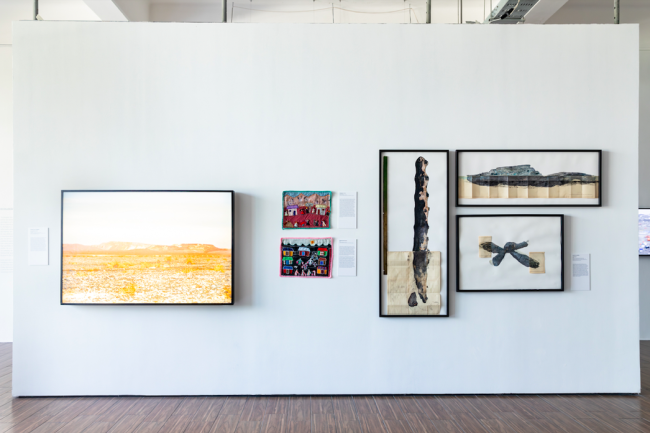
“Ecologies of Reciprocity” engages in these decolonial debates through works that resist the neoliberal ecocide imposed by the dictatorship. These works are also critical of a culture of monoculture controlled by multinational companies, denouncing the violence of ideas such as “progress” and “modernity” in dictatorship and post-dictatorship life. Including paintings, silkscreen, videos, photographs, arpilleras, sculptures, light boxes, and more, works in this section propose reciprocity systems that move towards a fairer future with memory.
Florencia San Martín is Assistant Professor of Art History at Lehigh University and Curator in charge of the conceptual framework of the exhibition, wall texts, and selection of artworks.
Other exhibition credits:
Claudia Del Fierro: Curator in charge of relating the exhibition to the community and educational programs, as well as design of archive and selection of artworks.
Carolina Arevalo: Assistant Curator
Pedro Chavarri: Exhibition Design
Valentina Menz: Activation Design
Matias Gamboa: Community Researcher

